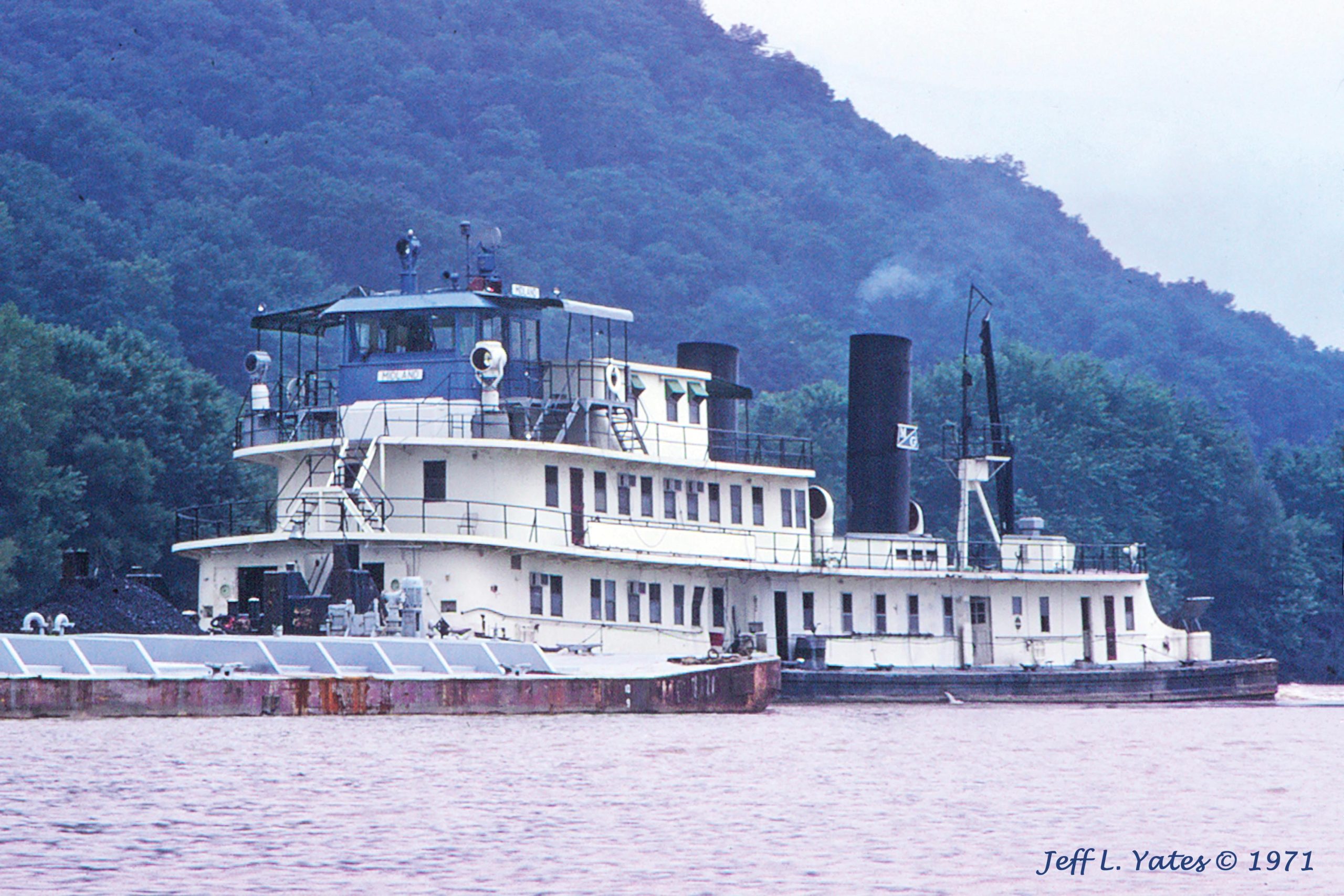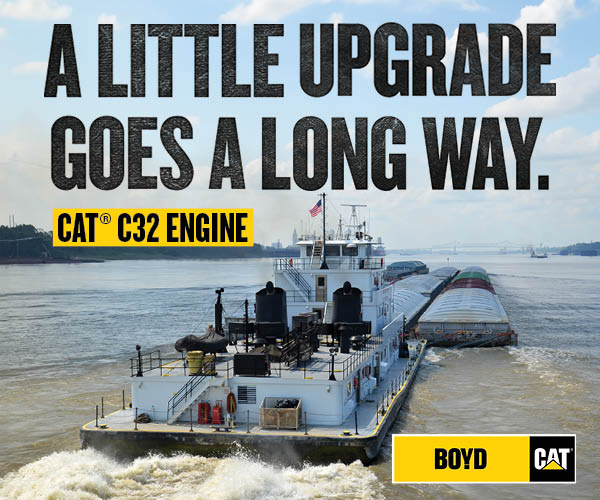The Dravo Contracting Company was justifiably proud of the towboat Wm. Penn that the company had built for the Dravo subsidiary Union Barge Line (UBL) in 1940. In the September 7, 1940, issue of The Waterways Journal, the firm described the boat as being “the product of decades of experience in the construction and operation of river towboats, supplemented by scientific research with floating craft.” The 176- by 36-foot vessel was the first line haul river towboat to be designed and built with kort nozzles. It was powered by a pair of Superior direct-reversing diesels totaling 1,300 hp., but the nozzles increased the push horsepower to approximately 1,600 hp.
The new boat was placed in the Pittsburgh-to-New Orleans run for UBL. The Wm. Penn performed so well that more like it would probably have been immediately built to replace some of the steam sternwheelers in the “Great White Fleet,” as the immaculate boats of UBL were known, but with the winds of World War II starting to blow, new vessel construction turned to the war effort. In May 1941, UBL purchased the new steam sternwheel Jason, which had been built for stock by Marietta Manufacturing Company, Point Pleasant, W.Va., in 1940. The Jason, rated at 1,600 hp., was then placed in the Pittsburgh-to-New Orleans trade along with the Wm. Penn.
The Wm. Penn performed as well as Dravo had planned. Bud Osbourne, retired marine surveyor from Pittsburgh, had a long history with UBL. His grandfather, Alfred S. Osbourne, was vice president and general manager of UBL at the time the Penn was built, and his father later was an executive with the line as well. When I spoke with him recently about the Penn, Osbourne said the Wm. Penn always had a reputation of being a very good handler, pusher and backer.
UBL featured the boat in ads throughout the 1940s. One advertisement that appeared in The Waterways Journal as well as the premier issues of Capt. Fred Way’s Inland River Record included a line drawing scene with the Penn shoving a tow on a river and a man and young boy watching it from the shore. The language in the ad declared that river transportation was a “natural resource” and that it “functions easily and differs from other forms of transportation in its simplicity.” The boat was also seen on several pages of “Towboat River,” a 1948 book describing river life by Edwin and Louise Rosskam.
In 1946, the Wm. Penn was assigned the radio call letters ATRP. By 1950 it had the newer call sign WB 4535, which many will remember so well. Following the war, Dravo built some higher horsepower boats for UBL. Even when they had boats in the fleet more than 3,000 hp., the Penn kept plugging along. Capt. Clarence Boggs has related to this writer how the Penn, with Capt. Al Edgington in charge, would move the same size tows the more powerful boats did, although maybe moving just a little slower. Bud Osbourne also remarked that it was a “gaited” boat.
Sam Winer, a river aficionado who grew up on the river at New Martinsville, W.Va., kept a log of the vessels he saw pass in his youth and said the Penn was a favorite.
In December 1960, the Wm. Penn was sold to Point Towing Co., Point Pleasant, W.Va., and renamed R.H. Bosworth II. In 1968, Point Towing and other concerns owned at the time by Capt. Robert H. Bosworth were sold to M/G Transport Services Inc. of Cincinnati. Under that ownership, the big boat was seen all over the river system. In 1970, it was renamed Midland. The only change in appearance from its days as the Penn was the M/G practice of painting the pilothouse a vivid blue.
In February 1973, the Midland was sold to Mainstream Shipyard & Supply, Greenville, Miss., which extensively rebuilt the 33-year-old boat. The tall smokestacks were replaced by smaller, more streamlined stacks, which dramatically changed the appearance of the vessel. The massive Superior engines were removed and replaced with a pair of GM 16-567C engines with Falk 3:1 reduction gears that gave the boat 3,400 hp. The vessel was renamed Martha Trotter and initially was operated by Hobart-Trotter Towing Inc. of Greenville. In 1974, it was sold to Hobart-Worley Towing, also of Greenville.
In 1977, the vessel was transferred to H.W. Towing Corp. of Dallas. In 1981, it was operated by H&S Transportation of Nashville, Tenn. The engines were upgraded to 16-645Cs in 1982, increasing the rating to 3,800 hp. In 1984, it was sold to Triangle Marine Inc. of Greenville and renamed Lucy Lee. In July 1994, it was sold to Northstar Navigation Inc. of Paducah, Ky., and renamed Indian Princess. In 2004, the boat was sold to Versatility Marine Inc., Gonzales, La., and renamed Captain Billy Watson. Most of the upper cabin behind the pilothouse was removed at this time, further altering its appearance.
In June 2007, after having operated on the Mississippi River system for 67 years, the boat was sold to Argentina, where it was renamed Ascuncion. This pioneer line haul towboat, the first to be designed and built with kort nozzles, had lived up to all the boasts Dravo made in 1940. The Wm. Penn influenced the boats built after it, and by all indications, the vessel is still operating these 84 years later.




